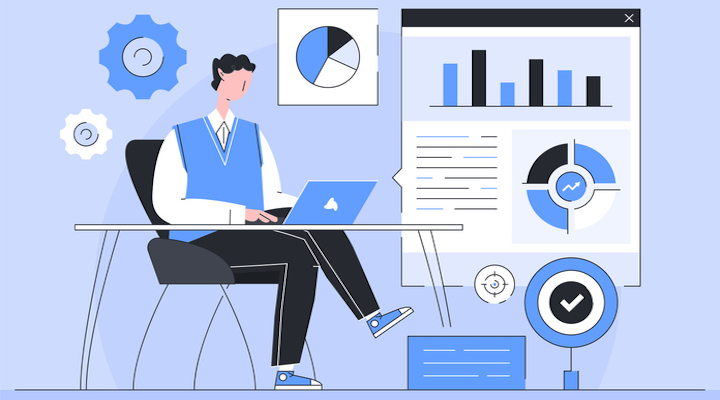Integrating Customer Data Platforms (CDPs) into digital strategies is crucial to building and maintaining competitive advantage and enhancing customer relationships.
A CDP is a tool that serves as a brand’s single source of truth about its customers. It can pull together and securely store customer data from multiple sources, structure that data, and make it available to other systems and solutions – all in a single vertically integrated location.
Klaviyo – an intelligent marketing automation platform – has a reimagined CDP suitable for businesses of all sizes that can effectively integrate more than 300 tools to empower smarter decision-making by a brand’s marketing team.
Ben Eversfield, senior customer success manager at Klaviyo, explains it is important that brands note that CDP capabilities vary greatly from one platform to the next.
“Some don’t offer much more than a persistent, unified database. Others, like Klaviyo, include additional capabilities to help you do more, even replacing multiple pieces of software with one seamless solution,” he says.
“Klaviyo’s CDP is a unified database at its core, but on top of that, it’s designed to help you store your data, analyse it, and use it all as effectively as possible.”
Eversfield says it is important to consider using a CDP at the early stages of a brand’s growth – as soon as it starts collecting customer data from transactions, loyalty programs, and various software solutions and plugins that a business deploys. Not doing so risks having data siloed across different, disconnected programs and hardware.
“At that point, it can be difficult to access, analyse, and use effectively,” he concludes.
This week, we share three ways businesses can use a CDP to help power smarter decisions, enable marketing teams to harness customer data, draw actionable insights and drive conversions.
1. Harness and collate data to better understand customers and their decision-making
Having data stored across multiple platforms makes it difficult to analyse and meaningfully examine.
For most brands, the collection of data has evolved over its history as the business grows and deploys new software and marketing tools. It’s important to remember that different systems collect different types of data – and typically store it within the system.
For example, data collected in a sales system is optimised for the sales process. Data in an analytics system is optimised for analytic processes. They’re not the same. Getting data from a form optimised for customer-facing applications to a form optimised for analysis needs data transformation.
That’s where Klaviyo’s CDP comes in. With connectivity across the entire marketing, sales and fulfilment journey, it can collate, curate and analyse all the data empowering a business to better understand its customers – right down to their individual journeys of engagement – and then customise and personalise communications, feeding into email and SMS flows.
2. Boost engagement and drive revenue to increase the customer lifetime value (CLV) with deeper personalisation
Analysing data in one place allows brands to identify opportunities to increase conversions with custom funnels based on customer interactions and to see where customer engagement drops off. In turn, this helps optimise underperforming messages with personalisation, discounts, or content updates.
If there is one key feature of a customer data platform that might rank above the rest, it’s the ability to effectively personalise interactions with customers.
By analysing data, you can better tailor offers, and online experiences to customers – but that depends on the ability to collect, store, analyse, and act on data. And for that, you need a customer data platform.
Your marketing team may have different ideas of how to market products to millennials versus baby boomers or understand subtle differences in regional slang and dialects – or even entirely different languages. Using Klaviyo’s CDP, businesses can easily and quickly identify those different customer segments, the critical first step to engaging with them.
The more you know about your customers, the more you can tailor your message to them, and the more effective your campaigns can be. The more engaged and satisfied your customers are with your products and communications, the longer the relationship will be and the higher their Customer Lifetime Value.
3. Use automation to orchestrate and optimise your marketing
Most brands that have progressively built their digital communications strategies at a pace that matches their customer growth have relied on simple, manually configured email solution platforms.
Advanced CDPs like Klaviyo’s use automation to supercharge your email and SMS communications, helping you create communications strategies and flows that engage with your customers on the medium they want to be contacted – at the time they are most likely to respond.
Using Klaviyo’s CDP you can trigger automated messages like a welcome email after someone visits your website, or a reminder text if someone leaves your site without making a purchase.
With a customer data platform, you can use all the personal insights you uncover about your customers’ preferences and shopping habits from your customer data platform analysis to add specific messages or improve the timing of your automated marketing.
Customer data platforms address some of the more vexing challenges facing marketers with support for discovering customer insights, personalising interactions with customers, and optimising campaigns.
Ready to power smarter digital relationships and sell to your customers better than ever before? Learn how by downloading the free Customer Data Platforms for Dummies today!






